Early summer has just exploded this year. Here’s a current picture of our garden from the second story.
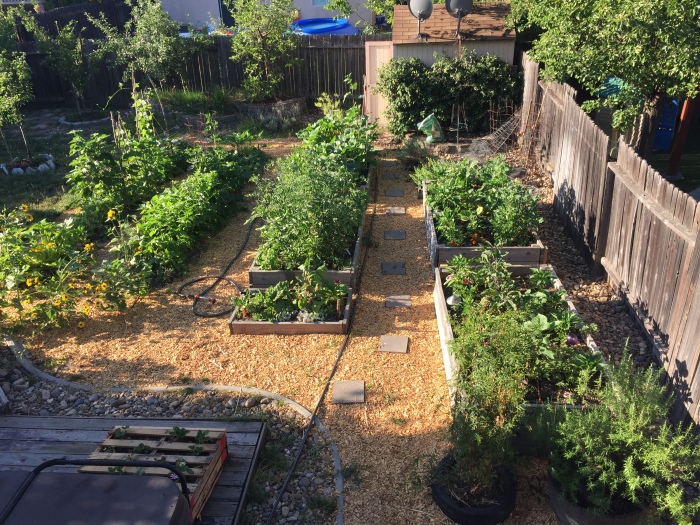
We made a few adjustments this year that our novice minds from the early 2010s couldn’t comprehend. For one, we planted fewer plants this year and gave each one more space. This way they weren’t leaf-punching one another as their roots fought for more water. We also managed to accumulate more compost this year (which will be an upcoming post by itself), and again we had fewer plants to feed. We’re finally getting the hang of watering in our sweltering environment. But one of the most notable changes was how we committed ourselves to companion planting. We’ve been dabbling in companion gardening for the past several years, but this year we threw ourselves into it. A ton of guides exist out there telling what to plant with what and, if you’re lucky, why. While we read some basics and hit on a few traditional pairings, we also used our best judgment and entered the waters of experimentation.
WHY DID WE BOTHER?
Well, lots of reasons:
-It’s better looking, aesthetically.
-It helps to repel pests
-It attracts beneficial insects and bugs
-It provides ground cover to assist with water retention and to discourage weed ground
-Many companions exchange with or provide nutrients to one another.
This last point is by far the most scientific, and for the average gardener opens the floodgate to an almost overwhelming knowledge base. We narrowed the data we needed by starting with our favorite crops and seeing what we could do to improve their yield. Tomatoes love basil and borage. Green beans go well with potatoes. Peppers and eggplants benefit from having marigolds around. And so on.
BUT WON’T THAT MEAN FEWER VEGETABLES? THE STUFF MY BODY CRAVES?
Many years ago a certain blogger (okay, me) didn’t see the value in spending the time, money, energy, compost, and planting space for a bunch of flowers, that not only didn’t provide food, but only served to make things “pretty.” Well, flowers are awesome. Even the monochromatic green could use a little flare at times.
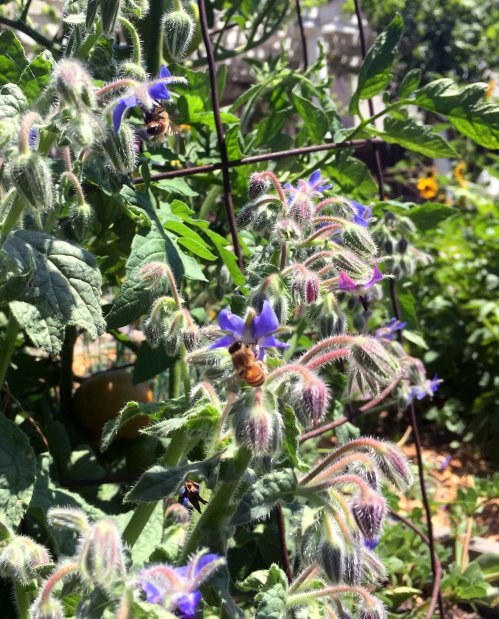
Borage in the tomato bed, doin’ a fine job attracting bees.
We’ve discovered that flowers not only need a lot less organic compost than food plants, the drought-tolerant types tend to need less water. We followed this strategy: plant vegetables first, then add in flowers wherever there’s room. The resource competition between the two is hardly fierce. They get along just fine.

Petunias and Peppers
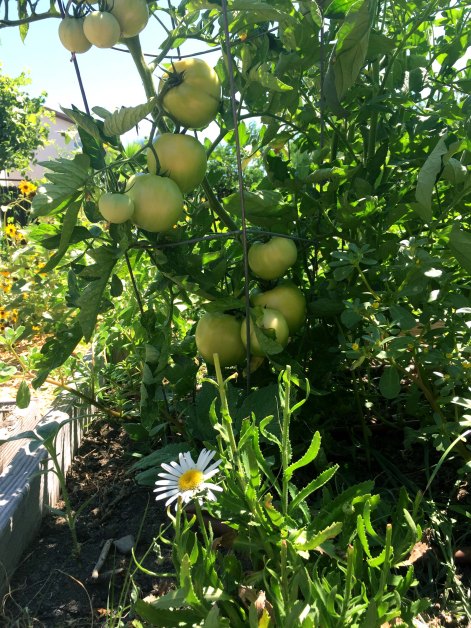
Daisies and Tomatoes
STARTING WITH THE BASICS
According to Sally Jean Cunningham, author of “Great Garden Companions,” the basics are: one main crop, one flower, and one herb. This grouping provides the best combination of ground cover, aroma, beneficial insect attraction, and pest repulsion. If you’re attracting bees, covering the ground to hold in water and prevent weed growth, and providing habitats for predatory insects (i.e. which eat the other insects you don’t want), you’ve already one three battles. Of course you want eventually want the nutrient companions so that plants share and pass calcium/nitrogen/phosphorous as needed, but…baby steps. We may learn a few recommended parings per season.

Alyssum growing under the chard, keep weeds out and water in.
We have basil all over the place as well. Between tomatoes, peppers, under the cucumber vine.
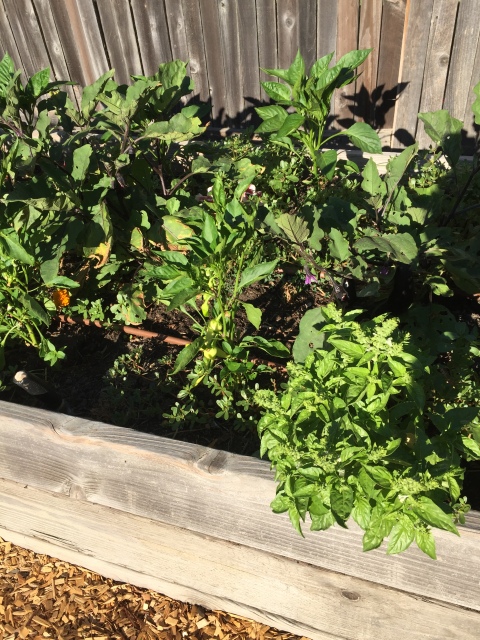
Peppers, basil, eggplant, marigolds, and purslane all in one bed.
One popular companion duo is green beans and potatoes. They repel one another’s predators, and the potatoes, heavy feeders, enjoy the nitrogen the beans return to the soil. We’ve dedicated half a row to this pairing.
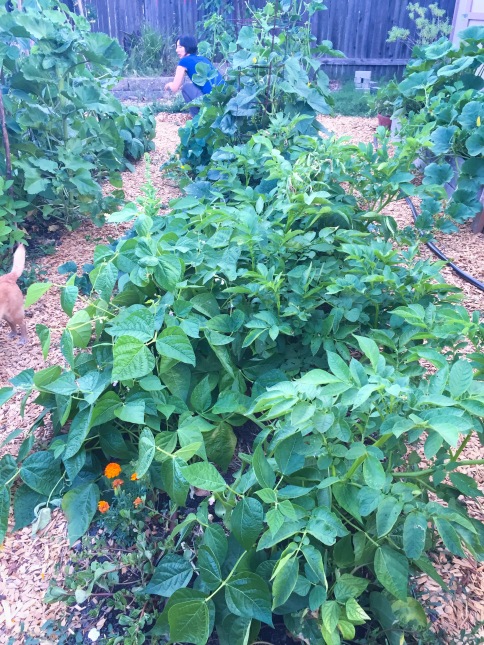
Massive row of beans and potatoes.Famous best buds.
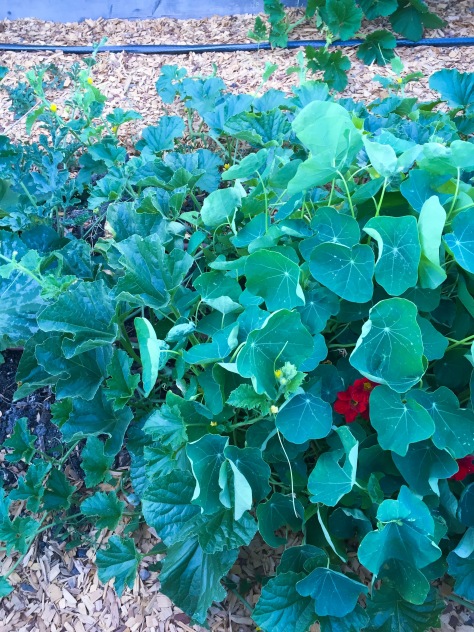
melons and nasturtium plants. Another known pairing that works well.
And of course sunflowers grow rampant. So much so that we’re constantly (judiciously) removing them and keeping the ones that we want.
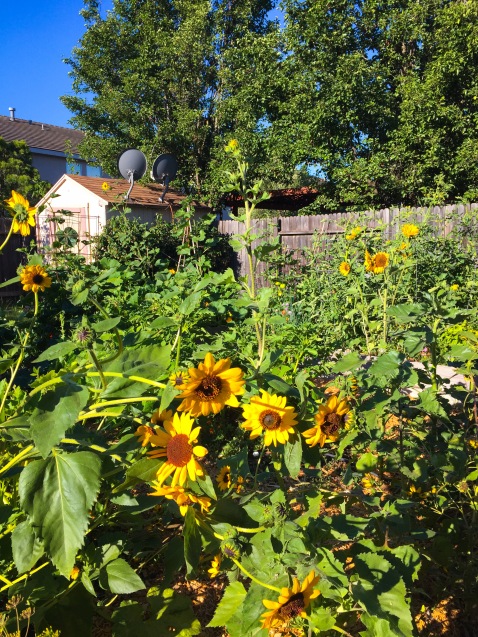
Sunflowers. Bees like them and so do we. Also, they supposedly repel aphids.


That is a beautiful garden.